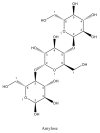Antidotes in Clinical Toxicology-Critical Review
- PMID: 37755734
- PMCID: PMC10534475
- DOI: 10.3390/toxics11090723
Antidotes in Clinical Toxicology-Critical Review
Abstract
Poisoning and overdose are very important aspects in medicine and toxicology. Chemical weapons pose a threat to civilians, and emergency medicine principles must be followed when dealing with patients who have been poisoned or overdosed. Antidotes have been used for centuries and modern research has led to the development of new antidotes that can accelerate the elimination of toxins from the body. Although some antidotes have become less relevant due to modern intensive care techniques, they can still save lives or reduce the severity of toxicity. The availability of antidotes is crucial, especially in developing countries where intensive care facilities may be limited. This article aims to provide information on specific antidotes, their recommended uses, and potential risks and new uses. In the case of poisoning, supportive therapies are most often used; however, in many cases, the administration of an appropriate antidote saves the patient's life. In this review, we reviewed the literature on selected antidotes used in the treatment of poisonings. We also characterised the antidotes (bio)chemically. We described the cases in which they are used together with the dosage recommendations. We also analysed the mechanisms of action. In addition, we described alternative methods of using a given substance as a drug, an example of which is N-acetylcysteine, which can be used in the treatment of COVID-19. This article was written as part of the implementation of the project of the Polish Ministry of Education and Science, "Toxicovigilance, poisoning prevention, and first aid in poisoning with xenobiotics of current clinical importance in Poland", grant number SKN/SP/570184/2023.
Keywords: antidotes; critical care; toxicology; toxin therapy.
Conflict of interest statement
The authors declare no conflict of interest.
Figures












References
-
- World Health Organization . Guidelines for Establishing a Poison Centre. World Health Organization; Geneva, Switzerland: 2020.
Publication types
LinkOut - more resources
Full Text Sources

